Top Atolls in the Maldives for Surfing Enthusiasts
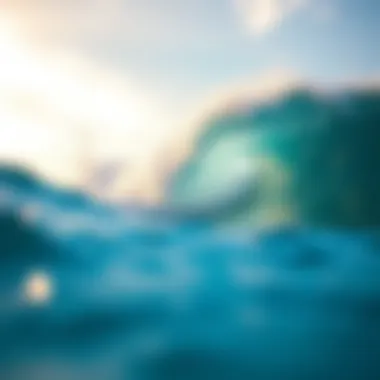
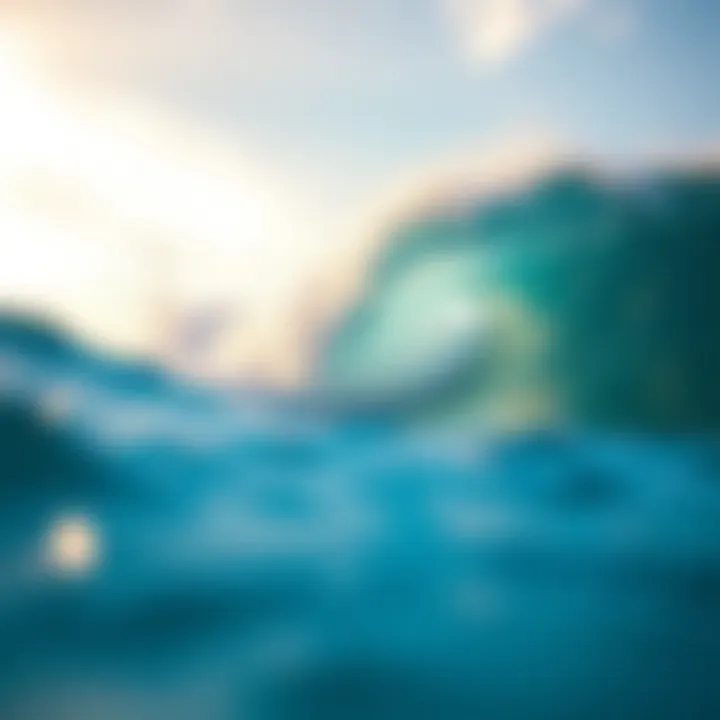
Intro
The Maldives is often painted as a paradise of turquoise waters, swaying palms, and pristine beaches, but to those who ride the waves, it's so much more. With a unique blend of atolls, each boasting its own signature swells, this island nation has become a premier destination for surfing enthusiasts. From the novice paddling out for the first time to seasoned surfers seeking the thrill of perfect barrels, there’s something here for everyone.
The atolls in the Maldives are not just geographical formations, but rather a playground for surf culture, continually evolving and adapting. This article aims to unravel the distinctive characteristics of the top atolls, pointing out surf spots that are sure to make your heart race. Alongside that, we’ll delve into different surfing techniques, essential surfboard selections, and maintenance tips to ensure your experience is rooted in safety and respect for the environment.
As the surf culture grows in the Maldives, there’s an increasing need for responsible surfing. This isn’t just about catching a wave; it's about making sure those waves remain for future generations. So, whether you're a curl-seeker or a wave-watcher, let’s dive into the depths of the best surfing atolls and find out what makes this tropical haven a surfer’s paradise.
The Allure of the Maldives
The Maldives is not merely a destination; it is a coveted paradise that calls out to adventurers and seekers of serenity alike. Its atolls form an intricate maze of islands, each offering a unique tapestry of experiences, especially for surfing enthusiasts. This article aims to navigate through these spectacular atolls, shining a light on the various surfing opportunities while emphasizing the importance of sustainable practices in such a delicate ecosystem.
One cannot overlook the geographical charm that the Maldives presents. The archipelago is composed of 26 atolls, where crystalline waters meet lush greenery. It's a splendid blend where land and sea converse harmoniously. The allure of the Maldives lies not just in its breathtaking vistas but also in the rich cultural fabric that envelops each atoll. Each island has its own story, whether it’s the fishermen's age-old techniques or vibrant festivals celebrated in the local communities.
The topography here is fascinating, defining not only the landscape but also the surfing experience itself. The reefs give birth to diverse waves, ranging from gentle swells to challenging breaks. These natural formations play a crucial role in determining the surf spots, acting as natural barriers that dictate wave patterns. For surfing enthusiasts, this means the opportunity to ride varying waves, each more exhilarating than the last.
Benefits of Surfing in the Maldives
- Unspoiled Beaches: With their pristine sands and crystal-clear water, many beaches in the Maldives remain untouched, providing the ideal setting for surf lovers.
- Diverse Surf Conditions: Whether you are a beginner learning the ropes or an expert looking for adrenaline-pumping waves, the Maldives caters to all skill levels, ensuring everyone can catch their perfect wave.
- Cultural Immersion: Surfing here is more than a sport; it’s a gateway into the local way of life. Engaging with local surf schools allows for a deeper understanding of the community, enhancing the overall experience.
While much of the allure lies in the surf, it’s crucial to acknowledge the environmental challenges faced by the Maldives. Erosion, climate change, and rising sea levels are pressing issues. Therefore, surfers and travelers must engage with the surroundings responsibly, preserving the beauty and ecological balance of these atolls for generations to come.
In the forthcoming sections, we will delve into the geographical structures and climate influences that shape this archipelago, uncovering the essence that makes the Maldives an unparalleled surfing haven.
Understanding Atolls
The Maldives is renowned for its stunning natural beauty, but to truly appreciate this paradise, it’s vital to grasp the concept of atolls. Atolls are not just tapestries of sand and water scattered across the ocean; they are vital ecosystems that support diverse marine life. Understanding their formation and structure broadens one's knowledge of the unique surfing opportunities available here. Not only do these landforms present prime surfing spots, but they also exhibit a delicate balance of nature, an aspect that every surfer should be aware of and respect.
Formation and Structure
Atolls are formed through a fascinating process that starts with volcanic islands. Over time, these islands become encircled by coral reefs as they erode and subside. This gradual sinking creates a lagoon, which is often shallow and lush with marine flora and fauna. An atoll can be viewed as a natural fortress, protecting rich ecosystems from the full force of oceanic storms.
So, how does this relate to surfing? The structure of atolls plays a crucial role in wave formation. The coral reefs create ideal conditions for surf breaks as they channel and shape incoming swells.
- Key Characteristics of Atolls
- Coral Reefs: Serve as a natural barrier and habitat.
- Lagoons: Provide calm waters for less experienced surfers and those looking to relax.
- Surf Breaks: The unique spatial arrangement allows for multiple surf spots, varying in difficulty and type.
For surfers, the configuration of each individual atoll becomes a palette of opportunities, ensuring that there’s something for everyone. Riders can find both mellow waves suitable for beginners and challenging barrels for seasoned pros. In places like North Malé Atoll, surfers can experience this firsthand, where each swell crafts a new landscape of waves.
Ecological Significance
The ecological importance of atolls cannot be overstated. They not only host an intricate web of life but also play a pivotal role in maintaining the health of our oceans. The coral reefs surrounding these atolls contribute significantly to carbon cycling and act as nurseries for many marine species. Healthy reefs lead to diverse marine life, which, in turn, supports a vibrant tourism industry — including surfing.
However, issues such as climate change pose significant threats to these ecosystems. Coral bleaching, caused by rising sea temperatures, could diminish the quality of surf breaks. This reality underscores the need for surfers to engage responsibly and raise awareness about ecological preservation.
"The health of our oceans is not just a concern, but a responsibility we all share, especially those of us lucky enough to ride their waves."
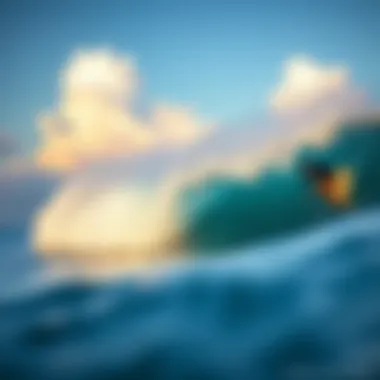
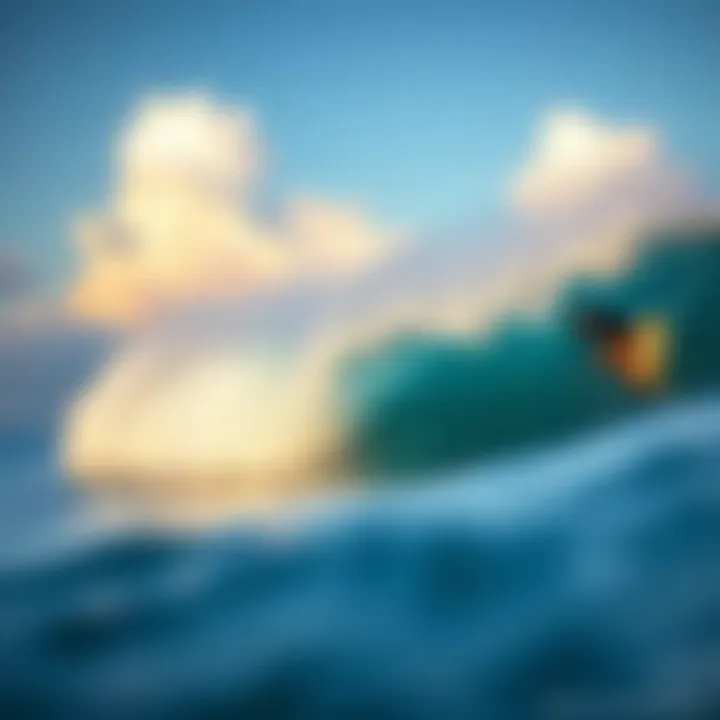
To further appreciate and sustain these magical atolls, it is imperative for surfing communities to foster a culture of ecological awareness and respect. Choices made by surfers today can have lasting impacts on the natural environment, and embracing sustainable practices can safeguard the wonder of atolls for future generations.
In summary, understanding the formation, structure, and ecological significance of atolls enhances not just the surfing experience but also fosters a deeper connection with the marine environment. Surfers who grasp these concepts will not only enjoy heart-pounding rides but also contribute to preserving the unique beauty of the Maldives for years to come.
Iconic Atolls of the Maldives
The Maldives boasts an impressive array of atolls, each one a unique wonder teeming with incredible surf spots. Exploring these iconic atolls is not just about catching the perfect wave; it also immerses surfers in stunning natural beauty, local traditions, and the rich marine life that surrounds them. Understanding these locations opens up avenues for not only adventure but also cultural experiences and sustainable practices that benefit both visitors and the local communities.
North Malé Atoll
Popular Surf Breaks
North Malé Atoll is often touted as the heart of surfing in the Maldives. The atoll features a variety of surf breaks that cater to different skill levels. One standout is Cokes, known for its powerful right-handers, which can pump out some epic walls perfect for advanced surfers. Another notable break is Chickens, which serves up both rights and lefts, typically performing best during the mid-tide.
These popular surf breaks do not only provide thrilling rides but also foster a community spirit among surfers who gather to share their experiences. The energy at these spots is electric, with surfers cheering each other on, creating an atmosphere that enhances the overall experience.
Advantages of surfing in these renowned breaks include their accessibility and proximity to resorts, making them an ideal choice for surfers looking to maximize their time on the water.
Accessibility
North Malé Atoll is particularly favorable concerning accessibility. With Malé International Airport just a stone's throw away, countless resorts and guesthouses offer speedy transfers to prime surf locations.
Most traveling surfers appreciate the ease of reaching their accommodations without navigating arduous transportation routes—ideal for those eager to get on the water quickly. However, increased accessibility can mean busier surf spots, especially during high season.
Ari Atoll
Surfing Opportunities
Ari Atoll serves as another gem in the Maldives. It is known for its varied reef breaks, such as Malik's, which offers a long wave that can hold significant size. These surfing opportunities are ideal for all skill levels, from beginners to experienced surfers looking to push their limits.
The consistent reef formations here provide ample chances for fun days filled with rides, allowing surfers to tailor their sessions to their abilities. The uniqueness of these waves is that they offer both challenging sections and playful intervals, catering to every surfer's mood.
Accommodation Choices
When it comes to accommodation, Ari Atoll offers an array of options, from luxury resorts to budget guesthouses. This diversity means surfers can choose based on their preferences and financial plans. High-end resorts often provide specialized surfing packages, including guided trips to various surf breaks and daily boat charters.
For more budget-conscious travelers, local guesthouses are increasingly popular as they offer a chance to save without sacrificing quality experiences. However, the downside may include less immediate access to prime surf locations compared to more upscale options.
Thaa Atoll
Hidden Gems
Thaa Atoll remains somewhat under the radar, making it a hidden gem for surfers seeking pristine conditions far from the bustling crowds. Locations like Olhuveli feature unspoiled reefs with fewer surfers, which is a winning combination for those who prefer solitude or more relaxed surfing adventures.
Often, the allure of hidden waves means discovering unique local spots that have yet to make it onto the mainstream surf tourism map. However, finding these spots may require local guidance, as they could be less well-marked or known than the bigger breaks.
Local Culture
Thaa Atoll's local culture adds another layer to the surfing experience. Unlike the more commercialized areas, visitors here are often welcomed with warmth and curiosity. Engaging with local fishermen or attending community festivals can enrich one's perspective of the Maldivian way of life. Surfers might even learn a thing or two about traditional fishing techniques or local cuisine.
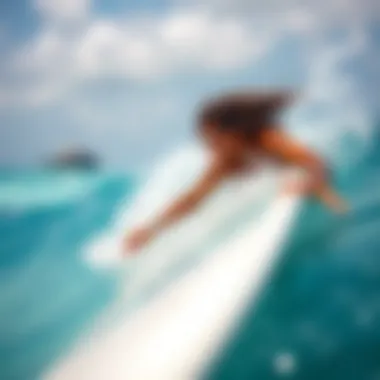
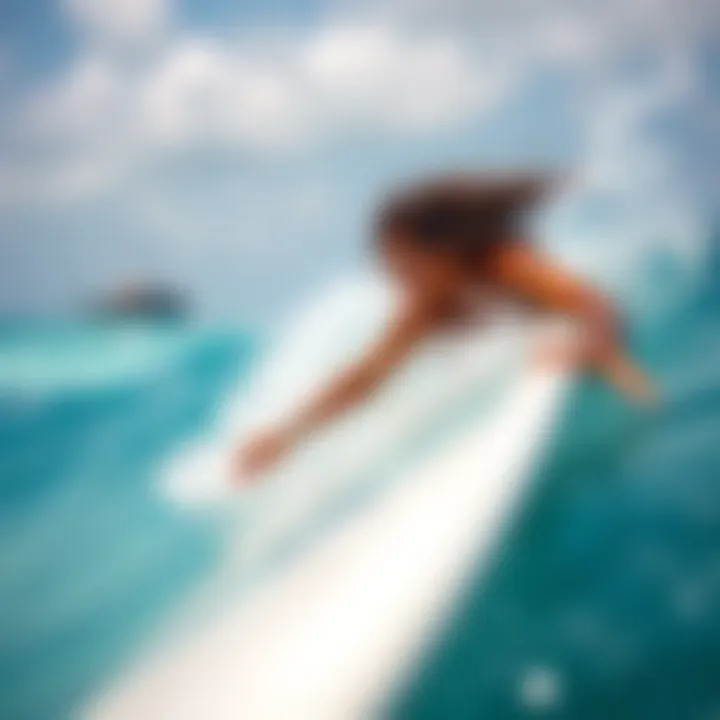
However, it’s essential to approach interactions with respect, ensuring that cultural nuances are honored. This may be a slight challenge for some, but it's a worthwhile endeavor that fosters better relationships with the residents.
Laamu Atoll
Wave Conditions
Laamu Atoll is characterized by excellent wave conditions suitable for surfers of all levels. Yin Yang is particularly famous for its ideal reef setup that can handle different winds and tides.
The unique features of Laamu’s reefs allow for more consistent sessions and variations depending on the swell direction. This diversity of wave types keeps things interesting for regular visitors who may wish to change up their routine.
Environmental Awareness
As a surfer in Laamu Atoll, being environmentally conscious is crucial. The atoll has made strides towards sustainable surfing practices that aim to protect the precious reefs and marine ecosystems. Many local surf schools actively promote awareness about reef preservation and encourage surfers to engage in eco-friendly habits.
Thriving reefs contribute significantly to the overall surfing experience, so respecting these waters is essential for ensuring they remain pristine for future generations. Surfers can consider this part of their responsibility when enjoying their time in Laamu, making every ride meaningful.
Planning Your Surfing Trip
When it comes to surfing in the stunning Maldives, planning your trip is half the battle. The archipelago offers a range of waters and weather patterns, each leading to its own set of surfing experiences. A well-thought-out plan makes it easier to enjoy your time riding the waves, rather than getting tangled in logistics and delays.
Best Time to Visit
Choosing the right season is crucial for maximizing the best surfing conditions. The ideal time for surf enthusiasts generally falls between March and May, when the swells are consistent, and the winds are favorable. During these months, the surf breaks around the various atolls experience less crowds, allowing for a more personal connection with both the ocean and the local culture. Despite this sweet spot, different atolls might have unique conditions; for instance, notably, North Malé Atoll tends to have good waves earlier in the year, while the Ari Atoll shows its colors later towards the summer.
Here’s an overview to help you plan:
- March to May: Warm water, consistent waves, pleasant weather.
- June to September: Bigger swells in some atolls, but expect rainy days.
- October to February: More unpredictable, but off-peak prices on accommodations.
Travel Logistics
Sorting out your travel logistics can seem like a daunting mountain to climb, but it’s essential for a seamless surfing trip. Getting to the Maldives isn't just about booking a flight; you'll have to consider the inter-island transfers too, which play a huge role in accessing those otherworldly waves.
Flight Options
Booking your flights with an eye on convenience and cost will save you some hard-earned cash and precious time. Major international carriers such as Emirates and Qatar Airways usually provide efficient connections into Malé International Airport, the hub for travelers. This choice cuts down on layover woes and typically presents a smoother journey.
- Tip: Look for connecting flights with short layover times to minimize stress. Try to fly during the week, as weekend flights tend to hike up prices.
- Consideration: Check Visa requirements, as some nationalities can enter without a visa for a limited stay, while others may need prior arrangements.
Ultimately, ease of access is a defining characteristic of these airline options, leveraging their extensive networks to get you closer to your surfing dreams without a hitch.
Transfers to Atolls
Once you've landed, the next step is hopping onto a speedboat or seaplane to reach your chosen atolls. Speedboats are the more budget-friendly option, often taking anywhere from 30 minutes to 1.5 hours, depending on your destination. In contrast, seaplane transfers offer a breathtaking aerial view of the Maldivian islands, but they can be pricier. However, they also significantly shorten travel time, sometimes getting you to your resort in under 20 minutes.
- Pros for Speedboats: More economical and frequent flights between islands.
- Cons: Less comfort, especially during choppy water.
- Pros for Seaplanes: Stunning views, rapid transit to far-off resorts.
- Cons: Higher cost and potential for weather-related delays.
Choosing the right transfer method can enhance your experience and make sure you spend more time paddling in the surf rather than sitting in a boat.
In summary, being strategic in your planning can pave the way for a more enjoyable and focused surfing experience in the Maldives. With the right timing and logistics, the waves will await your skillful maneuvers, making for an unforgettable adventure.
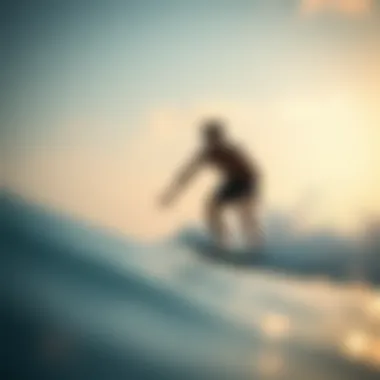
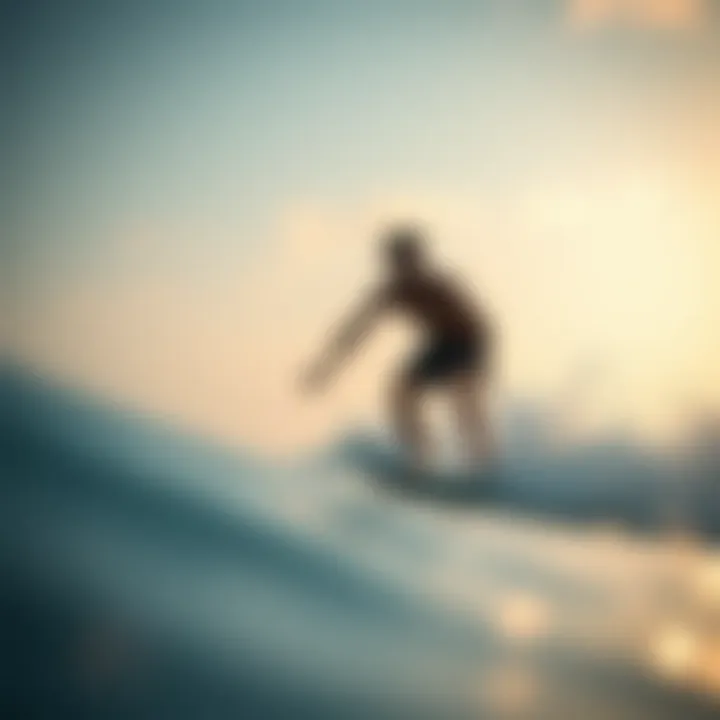
Sustainable Surfing Practices
Sustainable practices are increasingly becoming crucial in the surfing world, especially in paradises like the Maldives. With its pristine waters and delicate ecosystems, the Maldives offers surfers not just waves, but a call to protect the very environment that provides their playground. Engaging in sustainable surfing not only ensures the longevity of this magnificent landscape but also preserves it for generations of surfers to come.
Environmental Impact of Surfing
Surfing, while an exhilarating sport, can have a distinct impact on marine environments if not approached thoughtfully. The Maldives, home to vibrant coral reefs and diverse marine life, is especially vulnerable. Overcrowding at popular surf spots can lead to damage to coral formations, while improper waste disposal can taint the waters and disturb local ecosystems.
Moreover, boat traffic for surf tourism can disrupt the migratory patterns of species like turtles and dolphins. Even the materials used in surfboards, wetsuits, and other gear can take a toll if made from non-biodegradable substances. Maintaining a balance between enjoying the surf and responding to these environmental concerns takes conscious effort.
"Surfers are the guardians of the ocean; what we do with our waves shapes the sea's future."
How to Surf Responsibly
Embracing responsible surfing practices can make a significant difference. Here are some steps surfers can take:
- Avoid Overcrowding: Opt for less frequented spots or times to surf. This not only enhances the experience but also lessens the environmental strain on these areas.
- Leave No Trace: Bring all waste back to shore. This includes food wrappers, bottles, and anything else. Pack it in, pack it out.
- Respect Marine Life: Always be mindful of not disturbing marine animals. If you see a reef shark or a turtle, appreciate them from a distance rather than chasing or interacting.
- Choose Eco-Friendly Gear: Look for surfboards made from sustainable materials, or consider second-hand options. Brands are starting to create eco-conscious gear that doesn’t compromise performance.
- Support Local Conservation Efforts: Many local communities are engaged in conservation initiatives. Participate in or donate to these efforts to help protect the shores and waters you enjoy.
Implementing these practices ensures not only great surfing experiences but fosters a lasting relationship between surfers and the beautiful ecosystems of the Maldives.
Engagement with Local Communities
The interaction between surfing enthusiasts and the local communities of the Maldives is nothing short of symbiotic. When surfers visit these stunning atolls, they aren't just breezing through; they're tapping into a rich tapestry of culture and heritage. This engagement is essential, not just for preserving the delicate balance of these ecosystems but also for enriching the traveling experience itself.
Supporting local communities can have myriad benefits. First and foremost, it fosters a sense of respect for the traditions and customs that define the very regions surfers wish to explore. Engaging with local structures means embracing their ways—perhaps learning traditional fishing methods or participating in a cultural festival. These experiences can deepen one’s appreciation for the environment.
Moreover, building relationships aligns perfectly with the ethos of surfing culture, which values camaraderie and respect. When surfers communicate and interact with locals, they often find hidden gems and lesser-known surf spots that aren’t typically showcased in travel brochures.
"Instead of being mere visitors, be part of the community. This isn’t just a holiday; it’s an opportunity for authentic exchange."
Cultural Sensitivity
Cultural sensitivity goes beyond simple awareness; it’s about understanding and respecting local customs, practices, and beliefs. The Maldives, rich in Islamic tradition, offers a unique cultural landscape that surfers should approach with care. Tourists and surfers must adhere to local dress codes, especially when venturing outside resort facilities. For instance, wearing modest clothing while visiting local islands is a mark of respect.
It isn’t just about appearance. Language holds power too. A few words in Dhivehi, the local language, can open doors and foster goodwill. Phrases like "dhanyavaad" (thank you) or "bodu hithi" (big wave) can be icebreakers in a land where warmth and hospitality go hand in hand. Navigating through cultural nuances not only helps to mitigate chances of misunderstanding but also serves to bond visitors and locals, creating a richer, more authentic experience that enhances the joy of surfing.
Supporting Local Economies
The economic impact of tourism on local communities can’t be overstated. By engaging in practices that support local economies, surfers help sustain the livelihoods of those who inhabit these atolls. Choosing to eat at local restaurants instead of international chains, purchasing handmade crafts, or staying in locally-owned accommodations are effective methods to ensure that the benefits of surfing tourism flow into the hands of local artisans and businesspeople.
- Eat Local: Try traditional Maldivian dishes such as mas huni, a popular breakfast made from tuna and coconut. Supporting local eateries strengthens community ties.
- Shop Local: Purchase crafts or souvenirs directly from locals, ensuring their skills and traditions persist for future generations.
- Participate in Local Tours: Engage with guided tours run by local operators who have a genuine interest in showcasing their beloved islands and surf spots.
As surf culture evolves in these splendid atolls, it is paramount to integrate responsible tourism with community engagement. When one surfs with a purpose, not only do they catch waves but they also catch a glimpse of the vibrant lives that exist beyond the shoreline. Doing so ensures that both the surfers and the local community share the waves and the joy they bring—with respect for each other and the beautiful ocean that connects them.
Finale
As we draw the curtain on this exploration of the Maldives' surf-rich atolls, it's clear that this tropical paradise is not just about sun and palm trees. The unique geographical features of each atoll, combined with varied wave conditions, offer a playground for surfers of all levels. Whether you are seeking the thrill of catching a big wave off North Malé Atoll or the tranquil beauty of Laamu Atoll's less invasive surf breaks, there is something for everyone.
It's also vital to acknowledge the changing surf culture in the Maldives. With an increasing number of surfers attracted to its shores, there lies a pressing responsibility on each individual to engage with these precious ecosystems thoughtfully. The balance between enjoying the surf and maintaining the marine environment can be tricky, but incorporating sustainable practices ensures that these waves remain for future generations.
Key elements to takeaway:
- Diverse Experiences: Each atoll presents distinct characteristics, wave types, and local charm, catering to a range of preferences and expertise.
- Sustainable Surfing: Understanding the importance of environmental conservation can greatly enhance the surf experience and preserve the natural charm of these atolls.
- Cultural Appreciation: Engaging positively with local communities and supporting their economies enriches travel experiences while fostering respect for their heritage.
When one plans a surfing trip to the Maldives, it’s more than just an adventure; it’s an opportunity to connect with nature, the ocean, and local cultures. These atolls, with their magnificent waters and vibrant marine life, invite surfers to not only enjoy their beauty but also to be stewards of the environment they cherish. So, grab your board, respect the waves, and dive into this idyllic experience while keeping an eye on responsible surfing practices.



